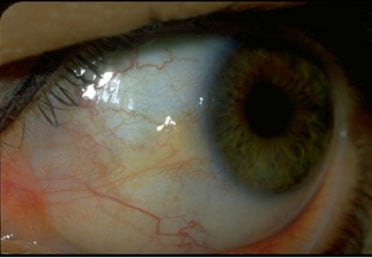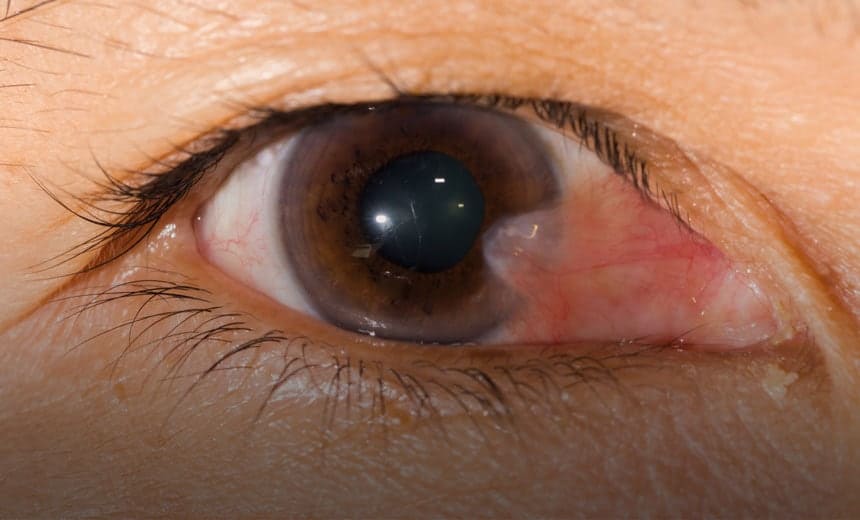Pterygium Growth
A pterygium is a benign (non-cancerous) growth on the surface of the eye. It typically begins with a pale, slightly yellow area in the sun-exposed area on the white of the eye (a Pingueculum).
Early-stage Pingueculum
It grows as a triangular, soft, fleshy growth of blood vessels and conjunctiva at the corner of the eye, with a pink and vascular appearance. This growth is in response to the damaging effects of high levels of sunlight, evaporative dryness, or hot winds. Surfers are one group of people who are prone to developing this condition, which is also known as Surfer’s Eye. Other at-risk groups include farmers, welders and people living in northern (sunnier) areas of Australia.
A large Pterygium is shown growing from a broad area nasally in a wedge across the cornea towards the pupil.
In general, pterygia (plural) are not dangerous and may be present for many years without growth or may grow rapidly over several months.
In the initial stages of pterygium development, the main concern may be cosmetic, due to redness and overall appearance, but there is no effect on vision. Symptoms in the early stages may include irritation, itching, redness or burning discomfort. These symptoms can often be managed with eye drops and sunglasses. Avoiding further exposure to sunlight and wind may reduce the stimulus for it to grow any larger. A small pterygium that has stopped growing is relatively harmless and may not need any further treatment. Surgery is an option if you are worried about the cosmetic appearance of your eye or irritation is persistent.
However, in some cases, the pterygium may continue growing across the surface of the eye and either distort the shape of the cornea causing blurred vision (astigmatism) or directly block vision by growing over the pupil. In these cases, surgery is recommended, preferably before it reaches an advanced stage. In advanced stages, scarring may limit the level of vision improvement that can be gained after surgery and some residual blurring may continue.
Using microsurgical techniques, your specialist eye surgeon will carefully peel the pterygium from the surface of the eye and replace the sick, damaged adjacent conjunctiva with a graft of healthy conjunctiva from under the upper eyelid which has not been exposed to sunlight. This is fixed into place with special tissue glue without sutures. Healing takes place over several weeks. It is important not to rub your eye until healing is complete.
There is a 5% chance that the condition may recur following surgery due to the extent of the sun damage, but the process of grafting helps to minimize this possibility.
Prevention of Pterygium
- When outdoors, wear good-quality, wrap-around sunglasses as recommended by an optometrist. Choose sunglasses that meet the Australian Standard and have an EPF UV rating of either 9 or 10.
- Surfers and others involved in water sports should always wear sunglasses during these activities.
- A wide-brimmed hat will also protect your eyes from sun and wind exposure.
Importantly, pterygia are not cancerous – they are benign growths. However, it’s important that you have an ophthalmologist evaluate any growth on your eye to rule out more serious conditions, such as rarer conjunctival cancer or iris tumour.



